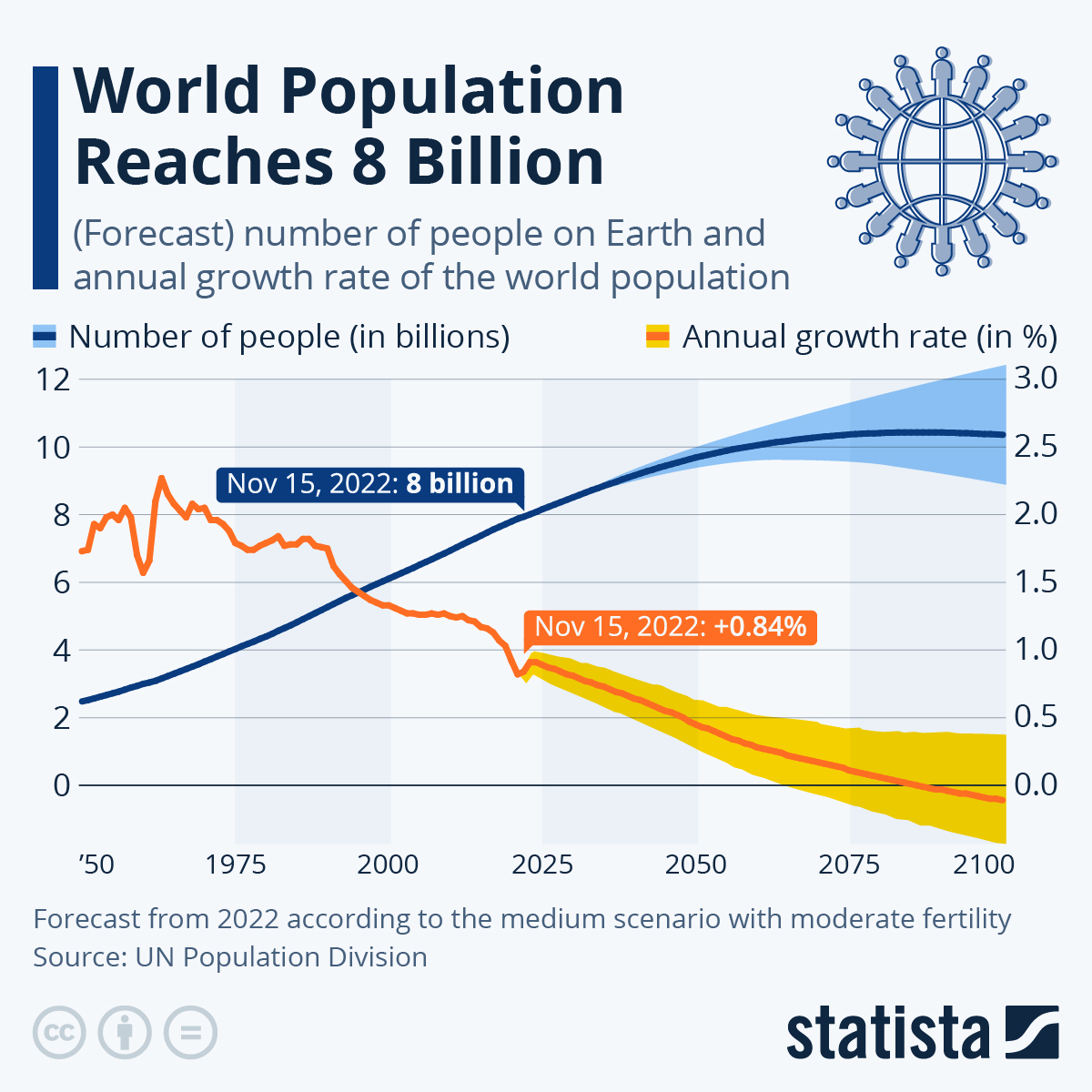According to UN calculations, the number of people in the world will exceed the 8 billion mark today, November 15, 2022 - more than three times as many as in 1950. Looking ahead, the UN Population Division's forecast predicts that the world's population will already exceed ten billion by 2059. By the end of the century, however, the number will then decline slightly. The growth of the worldwide populace has already been slowing down for decades, as illustrated by the yellow line in our infographic.
According to UN analysts, the growth is due to the gradual increase in life expectancy as a result of improvements in healthcare, nutrition, personal hygiene and medicine. It is also the result of high and consistent birth rates in some countries, they add. The countries with the largest populations in 2022 are China (1.41 billion), India (1.41 billion) and the United States (333 million). In terms of population by continent, about 59.3 percent of people lived in Asia in mid-2021.
At present, the world population is growing by around 82.4 million people a year. The countries with the highest population growth in 2021 were Syria, Niger and Equatorial Guinea. Overall, the ranking is dominated by African countries. By contrast, the list of countries with the highest population decline is dominated by eastern and southeastern European states, which have to contend with high emigration figures due to the wage and development gap with western Europe.





















